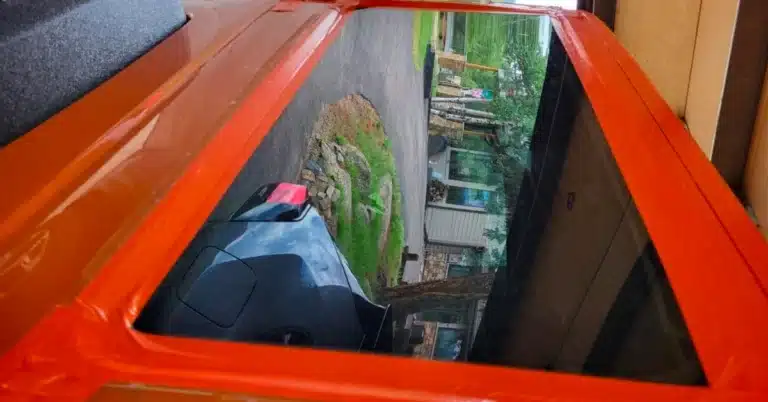I have been using 3M window tints on my car for a few years now. Their services and longevity are awesome.
But a few days back, I heard my sister had installed Motoshield Pro on her car, which had me thinking, what’s special in that tint?
After thorough research and comparison, I was able to find the best window tint between these two.
Here, I am sharing my findings from the Motoshield Pro vs. 3M comparison and also stating which one I prefer between the two for your convenience.
Keep on reading to find out more.
Read More: Huper Optik vs. 3M Windshield Tint
Motoshield Pro vs. 3M Windshield Tint
Motoshield Pro and 3M are two very different automotive window tint brands. And therefore, they have more than a few differences between them.
I have discussed the major differences between these two automotive tint brands for your better understanding.
However, before that, go through the comparison table below for a quick glance.
Quick Summary of The Differences
| Properties | Motoshield Pro | 3M Window Tint |
| Tint Type | Nano Ceramic and Carbon tint | Multilayer optical film tint |
| Constructions | Nano Ceramic technology | Nano-technology, Nano-carbon technology, dyed metal construction |
| Non-Metalized | Yes | No |
| IR Rejection | 99% | 95% |
| Product Range | 4 | 6 |
| Price Range | Higher | High |

Top 4 Differences Between Motoshield Pro and 3M Window Tints You Should Know About
Here is also an elaborate discussion of the differences between Motoshield Pro and 3M window tints so that you know more and can make an informed decision.
Performance
The performance of automotive window tints matters. And when I am discussing the performance of Motoshield Pro and 3M Window Tints, remember that there is some significant difference.
For starters, the tint films of Motoshield Pro can reject a whopping 99% UV rays and 99% IR, too. This means that they can block harmful rays and cut glare efficiently for better and safer driving.
Also, as these tints are made of Nanoceramic and carbon technologies, these tints offer the highest protection against heat, glare, and UV.
On the other hand, 3M Window Tints can block 95% of the IR (lesser than its competitor) for your convenience.
However, as these tint films are made of Multilayer optical film tint and feature Nano-technology and Nano-carbon technology, they provide top-notch protection to ensure a cool and comfortable interior.
Comfort
Both the Motoshield Pro and 3M Automotive Window Tints are extremely comfortable. But when I wanted to compare them, there was a significant difference between these two tint films.
As the Motoshield Pro tints are made with nano-ceramic and carbon technology, they can block 99% of the UV rays and Infrared light to ensure superior comfort inside the car cabin.
These features help to keep the car cabin cool and comfortable and also put less restraint on the air conditioning system.
However, when it comes to the 3M tint films, it’s slightly different. As these tints can block 95% Infrared heat, they offer less comfort than the Motoshield ones.
They will let more heat pass through the glass and might make the car interior a bit hotter than otherwise.

Versatility
When it comes to versatility, there is a slight difference between Motoshield Pro and 3M Window Tints.
Even though both these brands consider their client’s demands and, hence, provide a diverse range of products, Motoshield Pro has fewer films in its range compared to 3M.
While 3M has 6 different tint films in its product line, Motoshield Pro offers 4 different ones to satisfy the needs of its clients.
Cost
Because they are different brands with different values, the price range of both Motoshield Pro and 3M window tints differ greatly.
Because the tint films from Motoshield Pro have the highest IR and UV rejection, their prices are a bit expensive. You need to have a liberal budget to buy these tint films.
On the other hand, the prices of 3M window tins are less than the Motoshield ones. Even though they are expensive too, these tints don’t cost as much as their competitors.
Is Motoshield ceramic tint good?
The quality and performance of Motoshield ceramic tint can vary depending on the specific product and its intended use.
Ceramic window tint is generally known for its ability to block heat and UV rays while maintaining optical clarity.
Motoshield’s ceramic tints may offer similar benefits, such as reducing heat and glare inside the vehicle and protecting against UV radiation.
To determine if Motoshield ceramic tint is good for your needs, it’s essential to consider factors like your climate, budget, and the features of the particular tint product you’re interested in.
Is 3M tint better than ceramic?
3M offers a range of window tint products, including traditional and ceramic tint films. The choice between 3M tint and ceramic tint depends on your specific requirements.
Ceramic window tint is often preferred for its superior heat and UV rejection and its reduced interference with electronic signals (e.g., GPS and cell phone signals).
Traditional tint films can still provide benefits like UV protection and glare reduction but may be less effective at blocking heat.
The “better” option between 3M tint and ceramic tint depends on your priorities. Ceramic tint may be the preferred choice if you prioritize heat reduction, UV protection, and maintaining signal connectivity.
However, it’s essential to assess your needs, budget, and the specific products available from 3M to decide which tint is better for your situation.
What Andy Thinks
Now that I am done comparing Motoshield Pro vs. 3M in great detail, I can say that I still prefer my 3M window tints over the others.
That is because this company not only offers more variety of tints but also has more products in its line than Motoshield Pro.
Also, compared to Motoshield Pro, the tint films of 3M cost much less (although it’s still expensive).
If I need to choose one brand between Motoshield Pro and 3M, I would definitely pick 3M on any given day.







